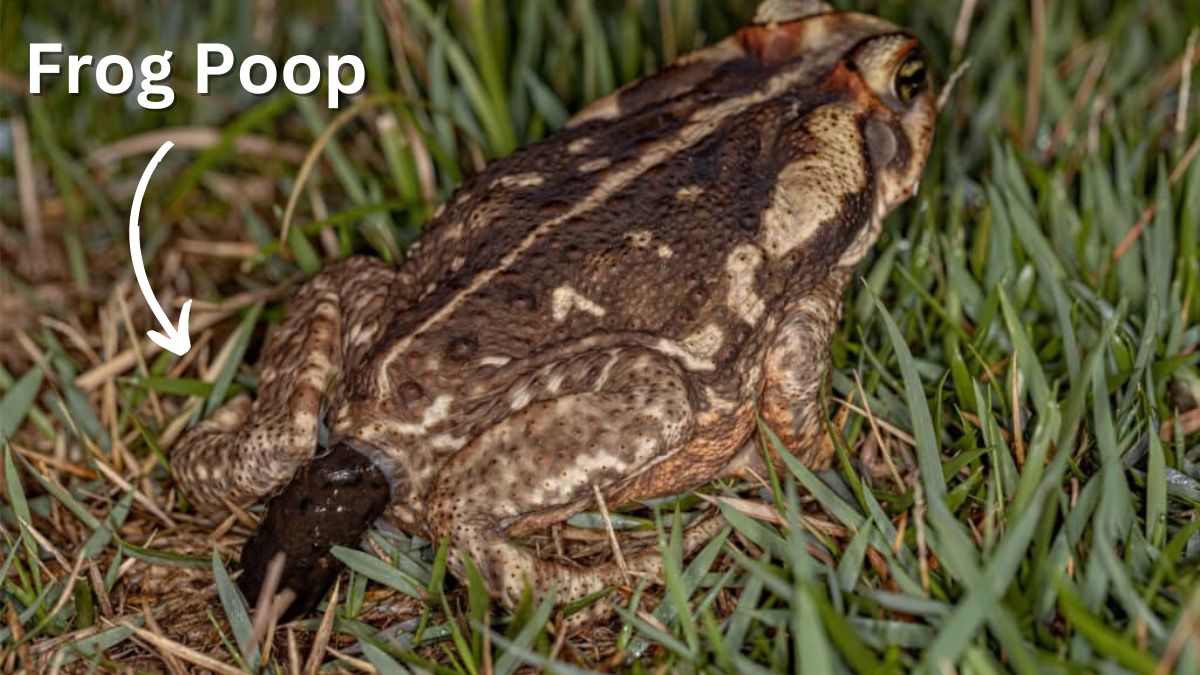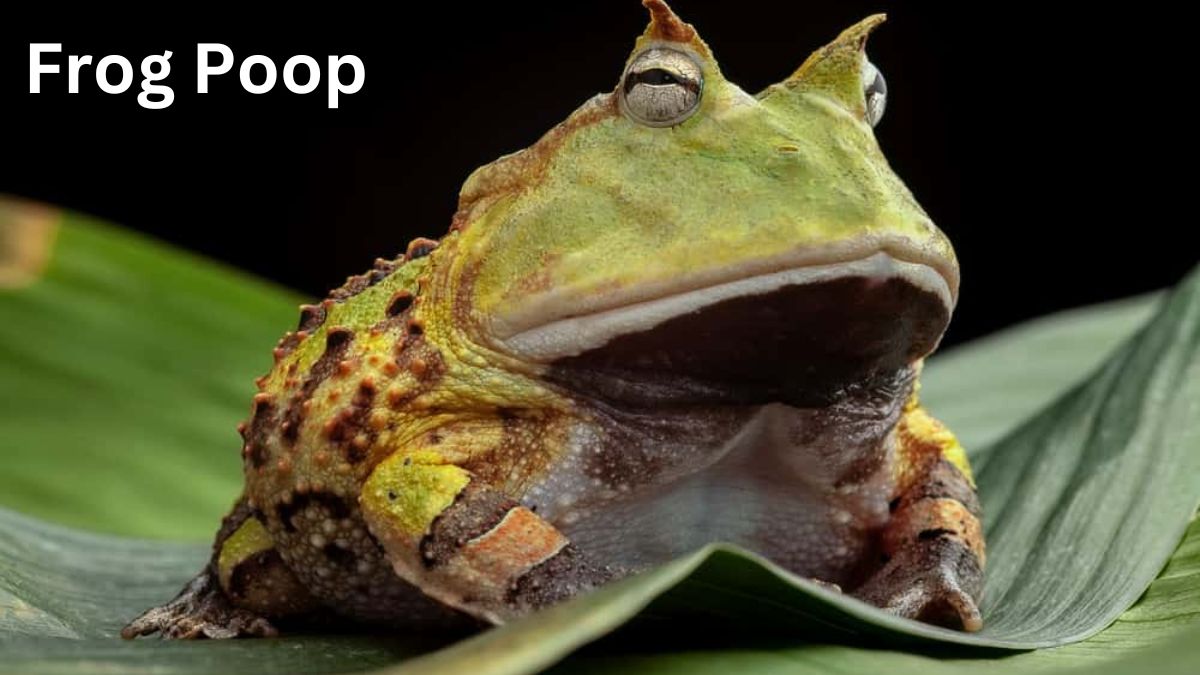When it comes to understanding nature, even the smallest details can offer intriguing insights. One such detail is frog poop. Whether you’re a pet owner, a gardener, or just a curious observer, knowing what frog poop looks like can be surprisingly helpful. It can help determine the health of your pet frog, identify if frogs are frequenting your garden, or simply satisfy a curious mind.
In this detailed guide, we’ll explore what frog poop looks like, its characteristics, where to find it, and why it’s important.
What Does Frog Poop Look Like?
Frog poop is relatively distinct and easy to identify once you know what to look for. Here are its key characteristics:
- Size
Frog poop is generally larger than you’d expect for a creature of its size. Adult frogs, especially larger species like bullfrogs, produce waste that can be as thick as a pencil and up to a couple of inches long. - Shape
Frog poop is usually tubular and elongated, resembling a sausage or a small log. The shape is consistent across most frog species. - Color
Fresh frog poop is dark brown or nearly black. The color can vary slightly depending on the frog’s diet. As it dries, it may turn lighter and develop a crumbly texture. - Texture
When fresh, frog poop is moist and shiny. It may appear sticky but hardens and becomes less shiny as it dries. - Smell
Like most animal feces, frog poop has a noticeable odor, especially when fresh. However, the smell is not as strong as that of larger mammals.
Where Can You Find Frog Poop?
Frogs are found in various habitats, and so is their poop. Here are common places to look for it:
- Gardens: If you have a garden with water sources like ponds or sprinklers, frogs are likely to visit, leaving their droppings on soil, rocks, or leaves.
- Terrariums: Pet frogs kept in enclosures will leave waste on the substrate, making it easier to spot.
- Near Water Bodies: Frogs frequent areas around ponds, rivers, and streams, where their poop can be found on rocks or vegetation nearby.
- Outdoor Furniture: If frogs frequent your yard, their poop may end up on patio furniture, decks, or even windowsills.

Why Is Frog Poop Important?
Understanding frog poop isn’t just a matter of curiosity; it serves several practical purposes:
1. Monitoring Pet Frog Health
For pet owners, inspecting your frog’s poop can provide vital health information. Consistency, color, and frequency of defecation can indicate if your frog is healthy or suffering from issues like parasites or dietary imbalances.
2. Identifying Frog Presence in Your Yard
Spotting frog droppings in your garden is a good indicator of their presence. Frogs are excellent for natural pest control, as they feed on insects like mosquitoes, flies, and beetles.
3. Environmental Indicators
Frogs are considered bioindicators, meaning their presence and health reflect the state of the environment. Observing frog droppings in your area can suggest a healthy ecosystem.
What Does Frog Poop Tell Us About Their Diet?
Frog droppings offer clues about their diet. Frogs are carnivorous and primarily eat insects, worms, and small invertebrates. The high-protein diet is evident in the texture and size of their feces. In some cases, you may even find undigested insect parts in the poop, such as wings or exoskeleton fragments.
Common Questions About Frog Poop
1. How Often Do Frogs Poop?
The frequency of frog defecation depends on their size, species, and diet. Larger frogs that eat more food may defecate daily, while smaller frogs might do so less frequently.
2. Can Frog Poop Spread Disease?
Yes, frog feces can carry harmful bacteria like Salmonella. If you’re handling frog poop, whether from a pet enclosure or your garden, always wash your hands thoroughly afterward.
3. Is Frog Poop Harmful to Plants?
Not at all! Frog poop is rich in nutrients and acts as a natural fertilizer. It’s beneficial for gardens and can help improve soil health.
How to Identify Frog Poop vs. Other Animal Poop
Frog poop can sometimes be mistaken for the droppings of other small animals like lizards or birds. Here’s how to differentiate:
- Lizard Poop: Lizard droppings often have a white tip, which is uric acid. Frog poop lacks this.
- Bird Poop: Bird droppings are generally splattered and white, unlike the solid, tubular form of frog poop.
Frog Poop and Pest Control
If you’re spotting frog poop frequently, it likely means your yard has plenty of insects, which attract frogs. This is a good sign if you’re looking to control pests naturally. However, if the frog population becomes overwhelming, you might need to take steps to limit their habitat.
How to Clean Frog Poop Safely
If you need to remove frog poop from your yard or terrarium, follow these steps:
- Wear Gloves: Always wear gloves to avoid direct contact.
- Use a Scoop or Tissue: Scoop up the poop and dispose of it in a sealed bag.
- Clean the Area: Use a mild disinfectant to clean the surface.
- Wash Your Hands: Even if you wore gloves, wash your hands thoroughly afterward.
Can Frog Poop Be Used as Fertilizer?
Yes, frog poop can serve as an organic fertilizer. It’s rich in nutrients like nitrogen and phosphorus, which are excellent for plant growth. However, if you’re collecting it from your garden, make sure it’s free of contaminants before use.
Visual Identification: A Picture of Frog Poop
Including images of frog poop can help you identify it more easily. A typical photo would show:
- Tubular, elongated shape.
- Dark brown or black color.
- Moist, shiny texture when fresh.
Conclusion
Frog poop might not be the most glamorous topic, but understanding it can be surprisingly useful. Whether you’re a pet owner, a gardener, or simply a nature enthusiast, knowing what frog poop looks like helps in identifying frog activity and ensuring their health and habitat are in balance.
From its unique appearance to its ecological importance, frog poop is a fascinating (and practical) subject that sheds light on the little-known aspects of these amphibians’ lives. Next time you come across frog droppings, you’ll know exactly what you’re looking at!
